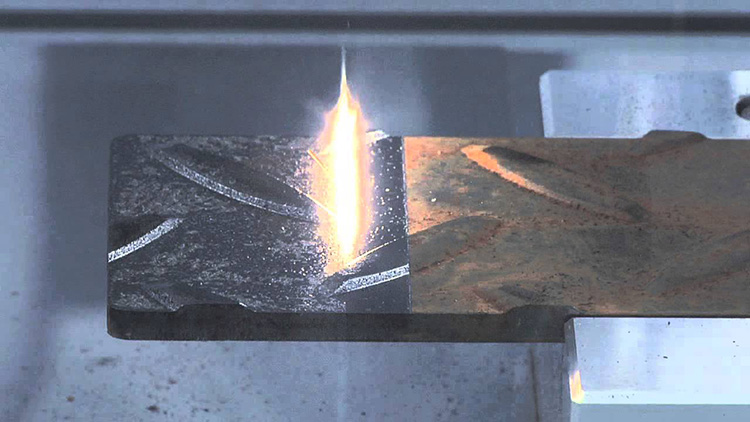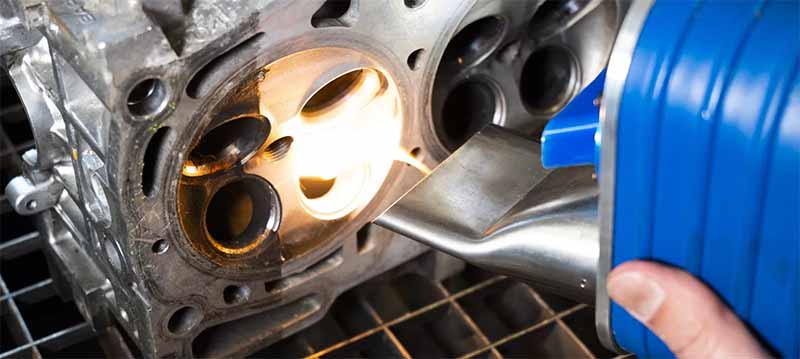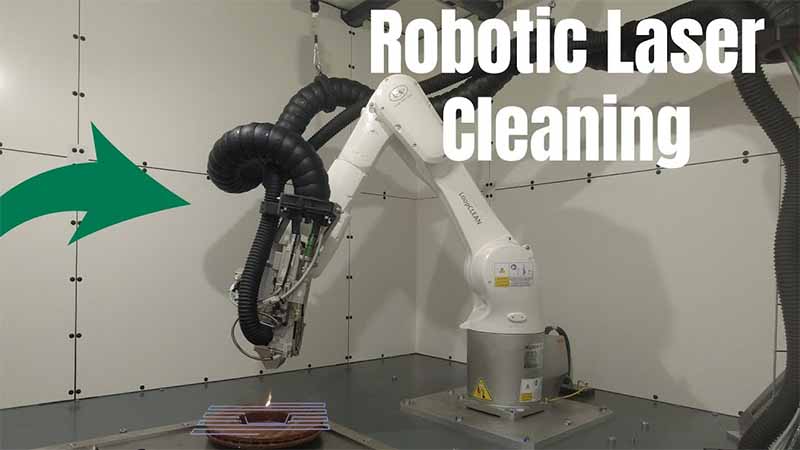Pulse laser cleaning machines are transforming the way industries approach surface cleaning, offering a more efficient and precise alternative to traditional methods. By using short, high-energy pulses of laser beam, these machines effectively remove rust, paint, contaminants, and residues without damaging the underlying material. In this article, we will introduce our pulse fiber laser cleaning machine and discuss its various applications.
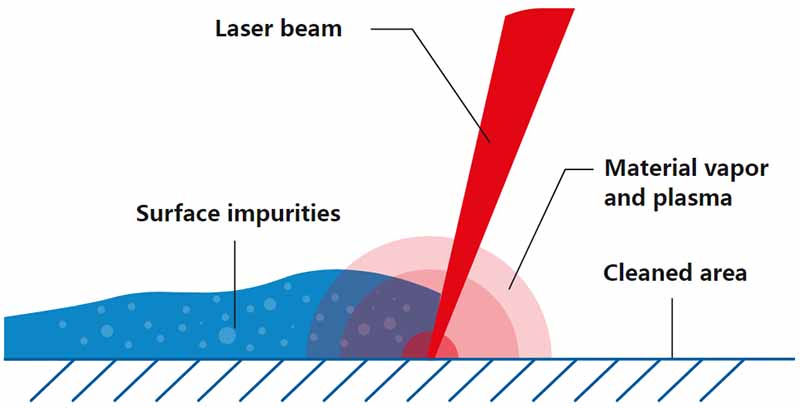
What is Pulse Laser Cleaning Machine
Pulse laser cleaning machine uses pulsed laser energy to scanning the surface of metals, removing contaminants, rust, and oxides through physical reactions.
How does a pulsed laser work? The working principle of a pulsed laser cleaning machine involves the laser beam emitted by the laser being absorbed by the contamination layer on the surface. By adjusting the laser’s energy density, the dirt heats up and expands. When the expansion force exceeds the adhesion between the dirt and the base material, the dirt detaches from the surface. To prevent surface damage, the laser pulse width must be short enough to avoid heat buildup.
Additionally, the laser beam’s low divergence angle and excellent directionality allow it to be focused into different spot sizes using a focusing system. At high energy absorption, a rapidly expanding plasma is formed, generating shock waves that further assist in removing contaminants.
Compared to traditional cleaning methods, pulse laser cleaning machines can adjust laser parameters for different types of dirt, removing various stains without damaging the surface and preserving the material’s original appearance and performance.
Why Are Pulsed Laser Cleaners More Efficient?
Pulsed lasers emit high-energy laser beams in an extremely short time, offering exceptionally high peak power and instantaneous power density. Unlike continuous wave lasers, high-power pulsed lasers can generate intense heat in an instant, but because the duration is so brief, the heat doesn’t have time to spread to the surrounding material. This significantly reduces the thermal impact on the substrate. High-power pulsed lasers also allow for precise control of the cleaning process by adjusting the pulse energy and frequency. This adjustability enables customization for different cleaning requirements, ensuring compatibility with various materials and application scenarios.
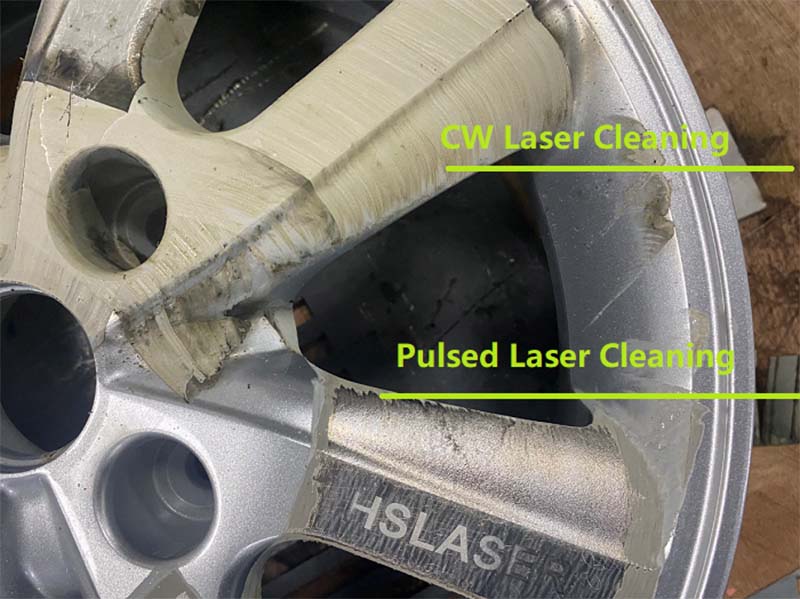
What Are the Advantages of Pulsed Lasers Vs. Continuous Lasers?
Reduced Thermal Effects:
Pulsed laser cleaning uses short laser pulses, with each pulse lasting for a very brief time. This means the heat is quickly removed before it can spread to the surrounding material, minimizing thermal damage to the substrate—especially important for heat-sensitive materials.
Higher Energy Efficiency:
Pulsed lasers concentrate their energy release in a short time, leading to higher energy efficiency. In contrast, continuous-wave lasers may cause energy accumulation on the material surface over extended exposure, increasing the damage risk of base material.
Better Selectivity:
Pulsed lasers allow for adjustable pulse width and energy density based on the type of contaminants, achieving optimal cleaning results. Continuous-wave lasers have a more limited range of parameter adjustments, making fine-tuned selective control more challenging.
Stronger Shock Wave Effect:
High-energy pulsed lasers can instantly generate plasma, creating strong shock waves that help remove stubborn contaminants. In comparison, the plasma effect generated by continuous-wave lasers is relatively weaker.
Higher Cleaning Efficiency:
Pulsed laser cleaning can complete tasks in a shorter time, particularly effective for removing thin-layer contaminants. Continuous-wave lasers may require longer durations to achieve similar cleaning results.
Two Types of Pulsed Lasers
In laser cleaning applications, two main types of lasers are widely used: Q-switched pulsed lasers and ultrashort pulsed lasers.
Q-Switched Pulsed Lasers
Q-switched pulsed lasers generate short pulses by abruptly releasing the energy stored within the laser resonator. These pulses are typically in the nanosecond range (10^ (-9)) seconds.
Key features of Q-switched pulsed lasers include:
High Pulse Energy:
Each pulse delivers relatively high energy, making it effective for removing thicker or harder contaminants.
Longer Pulse Width:
Although their pulse width is longer than that of ultrashort pulsed lasers, nanosecond pulses can still create sufficient transient heating to remove contaminants effectively.
Cost-Effectiveness:
Q-switched pulsed lasers are generally less expensive than ultrashort pulsed lasers, making them a more economical choice in many cases.
Versatility:
Suitable for cleaning a wide range of materials, including metals, plastics, and ceramics.
Ultrashort Pulsed Lasers
Ultrashort pulsed lasers produce pulses in the picosecond (10^ (-12)) seconds) or femtosecond (10^ (-15)) seconds) range.
Key features of ultrashort pulsed lasers include:
Extremely Short Pulse Width:
The very brief pulse duration prevents heat from spreading to surrounding materials, concentrating energy solely on the contaminant.
Low Thermal Effect:
Due to their extremely short pulse width, the impact on the substrate is minimal, making them ideal for cleaning heat-sensitive materials.
High Precision:
Capable of extremely precise surface treatment, suitable for applications requiring high-precision cleaning.
Strong Selectivity:
Allows for the precise removal of specific contaminants without damaging the substrate.
Pulse Laser Cleaning Machine Applications
Mold Industry
Due to its high-energy bursts, pulsed lasers can quickly evaporate or break down contaminants, oxides, and coatings on surfaces, providing powerful cleaning capabilities. This makes them ideal for scenarios with severe surface contamination or where high-precision cleaning is required, particularly for mold surface cleaning.
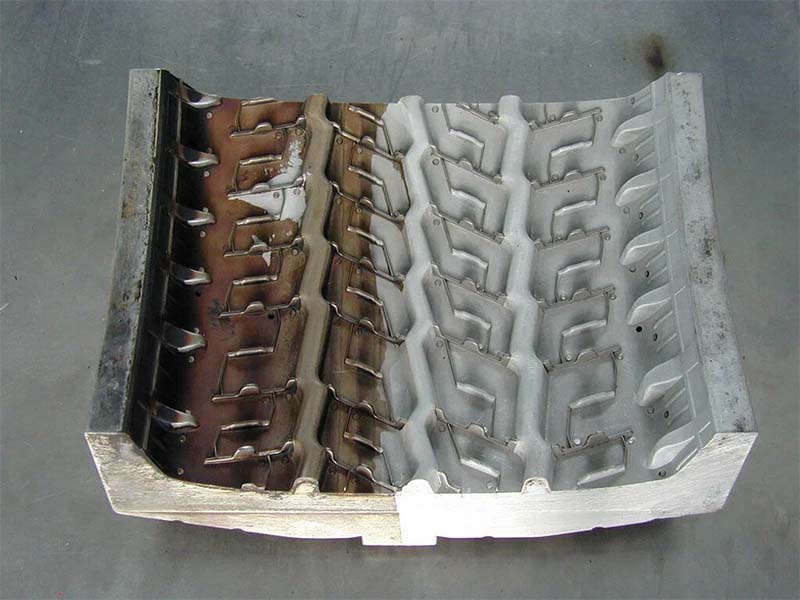
Precision Instrument Industry
The precision machinery industry often requires the removal of lubricants and anti-corrosion agents, such as esters and mineral oils, from parts. Traditional chemical cleaning methods may leave residues, while laser cleaning can completely remove these substances without damaging the surface of the parts.
Laser Rust Removal
Laser rust removal is a common application of laser cleaning technology. High peak power pulsed lasers target rust layers, with the laser energy being absorbed, causing a rapid temperature increase in the rust layer. This triggers expansion, thermal shock, and phase change, effectively removing rust. As a non-contact mechanical process, laser rust removal avoids mechanical damage to the workpiece, preserving its integrity. The equipment’s high integration, flexibility, and ease of automation improve production efficiency and operational convenience. The precision control of pulsed laser cleaning system allows for targeted rust removal, suitable for complex curved surfaces, enhancing cleaning accuracy.
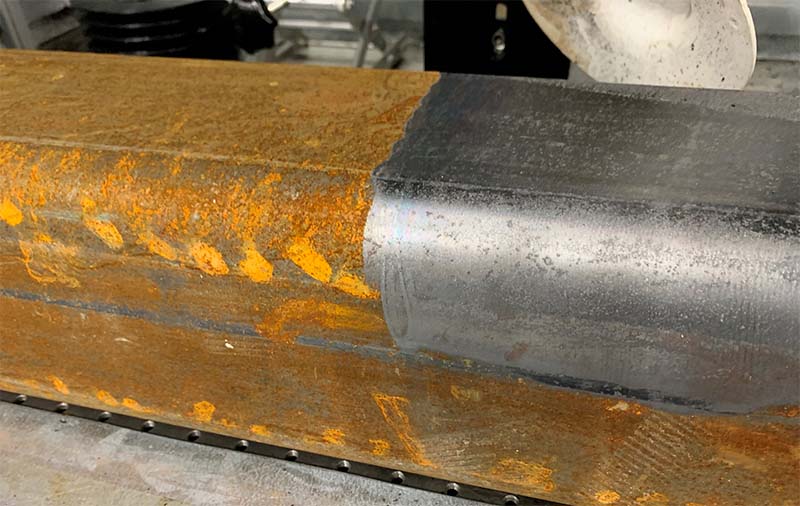
Industrial Manufacturing
In industrial production, pulsed laser is frequently used for metal surface cleaning, such as removing grease, rust, and oxides. This method can significantly improve product quality and production efficiency. For example, in the automotive industry, pulse fiber laser cleaning machine can remove paint residues or oxide layers from parts, providing a clean and uniform surface for subsequent welding or coating processes.
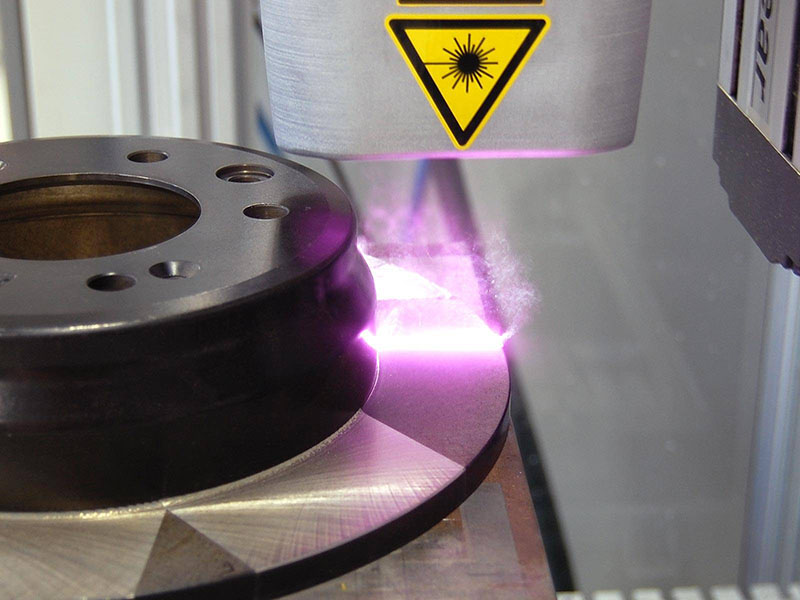
Conservation and Restoration of Artifacts
In the field of artifact conservation, pulsed fiber laser cleaning machine effectively removes stains, dust, and non-original surface coatings without damaging the artifact itself. This method is especially valuable for fragile or precious artifacts, as it enables precise cleaning without the use of chemical agents. For example, when restoring ancient frescoes or sculptures, laser cleaning can accurately eliminate accumulated dust and grime, restoring the original color and texture.
Cleaning of Medical Instruments
In the medical field, pulsed laser cleaning technology can remove biofilms, blood residues, and other contaminants from surgical tools and medical equipment, ensuring hygiene and reducing the risk of cross-infection. Additionally, laser cleaning can be used to treat the surfaces of precision components, such as removing tiny particles from implants, thereby improving biocompatibility and extending their lifespan.
Semiconductor Manufacturing
This technology removes impurities and particles from silicon wafers, ensuring high-quality electronic components. As a non-contact method, it prevents damage like microscopic scratches, meeting the strict process standards required in semiconductor manufacturing.
Electronic Components
Pulsed laser cleaning safely removes nanoparticles from delicate electronic components by creating plasma shock waves, which dislodge particles without damaging the substrate. This method offers an efficient and environmentally friendly solution for microelectronics cleaning challenges.
The Best Pulse Laser Cleaning Machine for Industrial Cleaning Solutions
DPLASER’s pulse fiber laser cleaning machine is an advanced surface treatment solution that uses laser pulses to remove contaminants such as resin, grease, dirt, rust, coatings, and paint from surfaces without damaging the underlying material. It offers benefits like high surface cleanliness, automatic focusing, and suitability for complex surface cleaning.
The handheld pulse laser cleaning machine is versatile and can be widely used in various fields such as rust removal, oil removal, paint stripping, coating removal, oxide layer removal, plating removal, adhesive layer removal, and artifact restoration. It is also suitable for industries like aerospace, mold manufacturing, automotive production, food processing, tire and wheel manufacturing, pharmaceuticals, and chemicals. This technology excels in these applications due to its efficiency, precision, and environmentally friendly nature.

Features:
Automatic Focusing:
Adjusts the focal point automatically according to surface variations, enhancing cleaning effectiveness.
Curved Surface Cleaning Capability:
Achieves high standards of surface cleanliness, even on complex surfaces.
Portable Design:
Equipped with universal wheels for easy mobility across different work areas. Stable frame with high-strength structure and ergonomic design for effortless pushing and pulling.
Handheld Operation:
Features a small laser head for manual control, ensuring easy operation and high flexibility for large areas or hard-to-reach areas.
Dust-Free and Water-Free:
The cleaning process does not produce dust or wastewater, ideal for maintaining precision instruments.
High-Efficiency Components:
Made with high-quality components to ensure efficient cleaning.
Long Lifespan:
Offers good system stability and simple controls, with an expected lifespan of up to 50,000 hours.
Nano-Precision:
Capable of achieving nanometer-level precision, suitable for precision machining applications.
Specifications:
Power Options: 100W / 200W / 300W
Applications: Laser cleaning of rust, grease, oil, coatings, dirt, oxides, etc.
Laser Source: Pulsed fiber laser
Suitable Materials: Aluminum, stainless steel, carbon steel, stone, rubber, wood, etc.
Pulse Width: ≤20 milliseconds
Scanning Width: 0-120 mm
Repetition Frequency: 20-50 kHz
Voltage: 380V / 220V, 50Hz
Dapeng Laser’s pulsed laser cleaning machines offer extensive application potential and flexible configurations, providing customized and efficient solutions tailored to the cleaning needs of various industries, including different power options (100W, 200W, 300W) and multiple configurations to adapt to cleaning tasks of various materials such as aluminum, stainless steel, steel, stone, rubber, wood, etc.
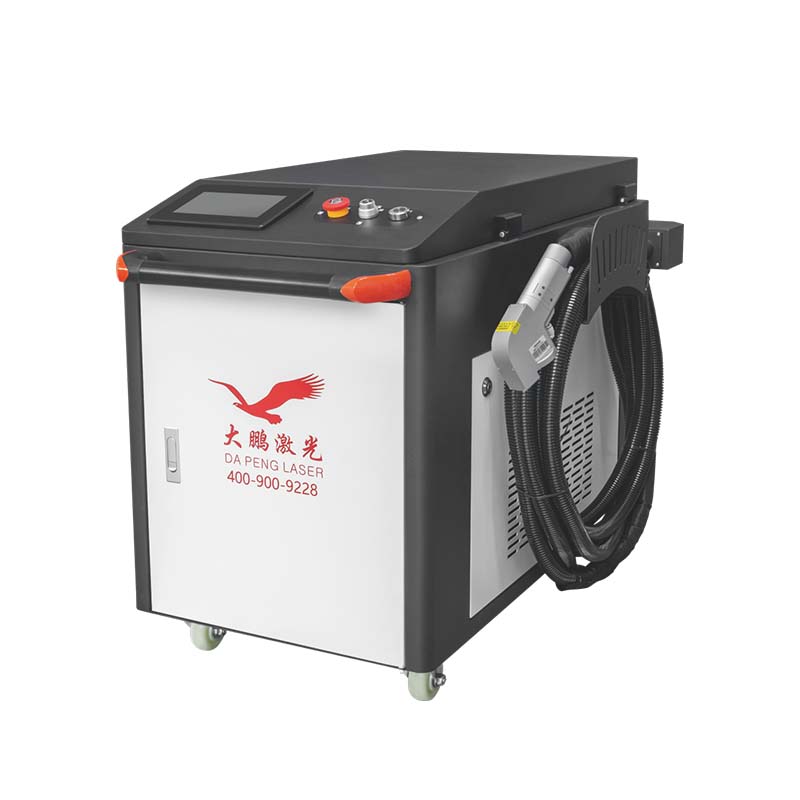
The Bottom Line
Portable pulse laser cleaning machine offer a cutting-edge solution for industries seeking efficient, precise, and environmentally friendly cleaning methods. With their ability to remove contaminants without damaging surfaces, pulse lasers provide distinct advantages over conventional techniques, making them ideal for a wide range of applications. By choosing the best pulse laser cleaning machine, you can benefit from advanced technology, tailored to meet the unique demands of your industry, ensuring superior performance and reliability. Explore our offerings to find the perfect cleaning solution for your needs.
